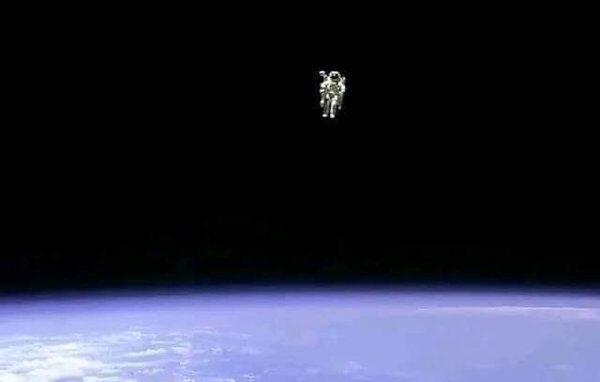In the narrative of space exploration, milestones continually redefine human boundaries and technology. On February 7, 1984, during NASA’s STS-41-B mission, astronauts achieved a groundbreaking feat – the first untethered spacewalk. This event forever altered perceptions of human mobility in space.
Setting the Stage

The Space Shuttle Challenger launched the STS-41-B mission on February 3, 1984, carrying five astronauts: Vance D. Brand, Robert L. Gibson, Bruce McCandless II, Ronald McNair, and Robert L. Stewart. Bruce McCandless II, among them, played a pivotal role in executing the historic untethered spacewalk.
The Space Shuttle’s payload bay housed the Manned Maneuvering Unit (MMU), a jet-powered backpack developed by NASA in collaboration with Martin Marietta. Its purpose was to provide astronauts with unattached mobility in the weightlessness of space, representing a groundbreaking innovation.
The Moment of Truth
On the mission’s third day, February 7, 1984, Bruce McCandless II ventured into the vacuum of space, equipped with the MMU. This backpack empowered him to navigate freely, shattering the constraints of traditional tethered extravehicular activities (EVAs). The moment marked a colossal leap forward in human space exploration.
Technical Challenges

The development of the MMU posed numerous technical challenges. Engineers had to design a compact and lightweight propulsion system, ensure sufficient fuel for extended spacewalks, and create a precise control system. The success of the untethered spacewalk underscored the collaborative efforts of scientists, engineers, and astronauts who pushed the boundaries of aerospace technology.
Legacy and Impact
The first unattached spacewalk stands as a defining moment, showcasing humanity’s ability to conquer the harsh conditions of space. It paved the way for subsequent spacewalks and offered valuable insights into the capabilities and limitations of human mobility in microgravity environments.

The MMU continued to find application in subsequent shuttle missions, enhancing astronauts’ ability to perform tasks outside the spacecraft. Lessons learned from the first untethered spacewalk influenced the design and development of future spacesuit technologies and extravehicular mobility units.
Conclusion
The first untethered spacewalk during NASA’s STS-41-B mission remains a beacon of human achievement in space exploration. Bruce McCandless II’s daring journey into the cosmic void showcased the triumph of human ingenuity over the challenges of space, leaving an indelible mark on the history of space exploration. This pioneering leap continues to inspire future generations of scientists, engineers, and astronauts, reminding us of the boundless possibilities beyond our planet’s atmosphere.
What’s next? Read about the Carrington Event.